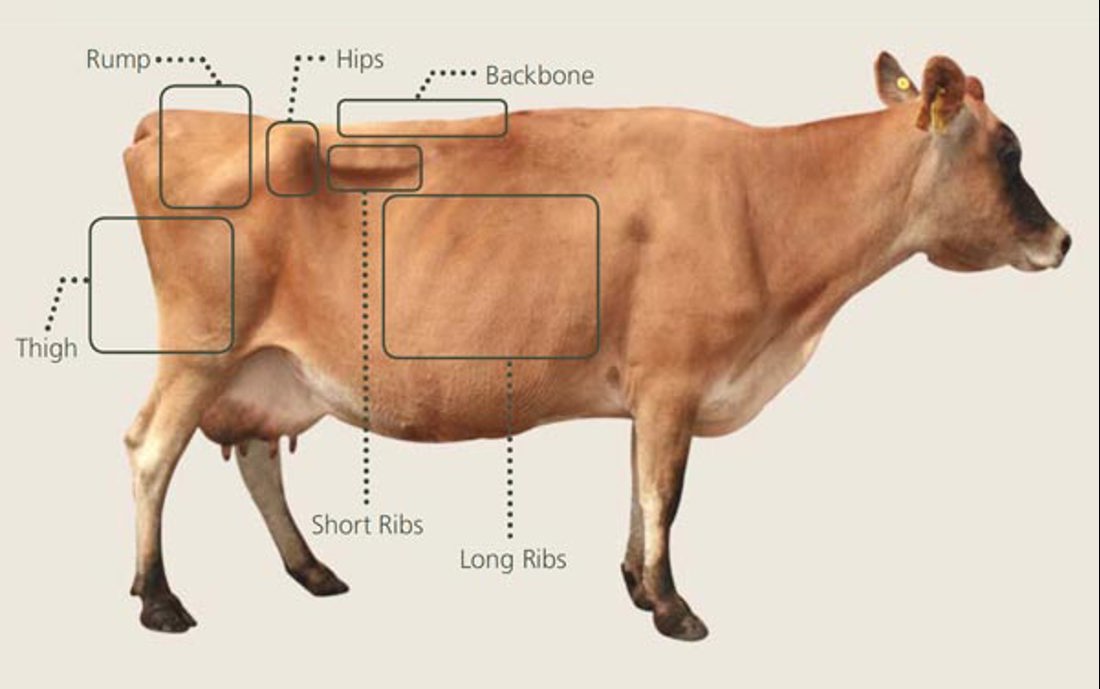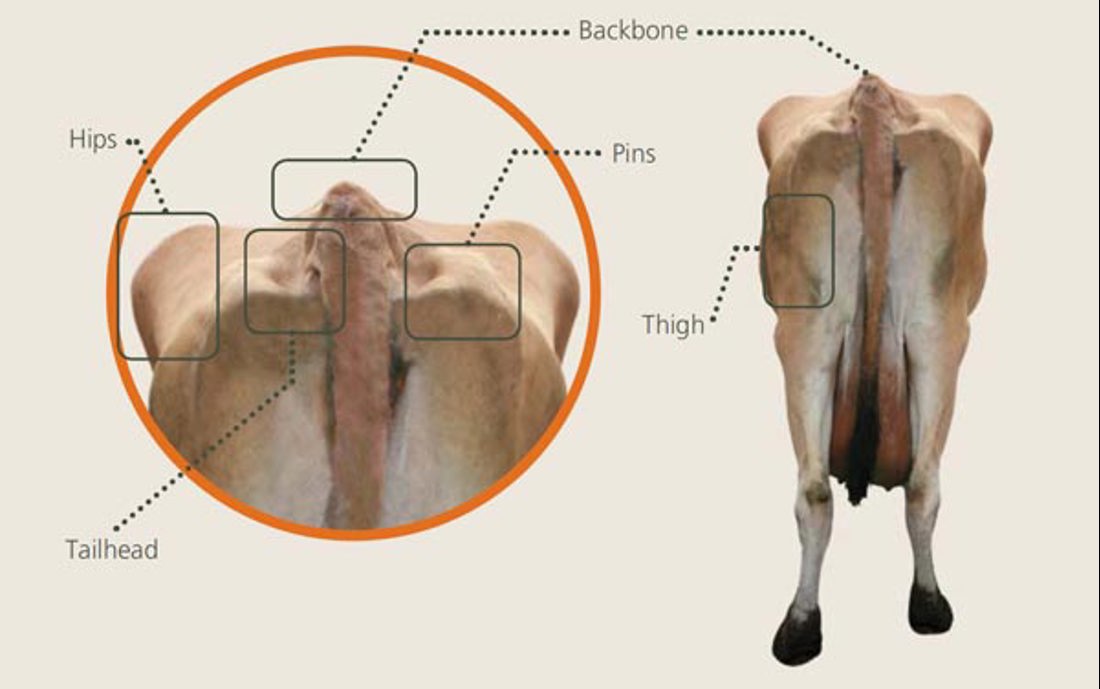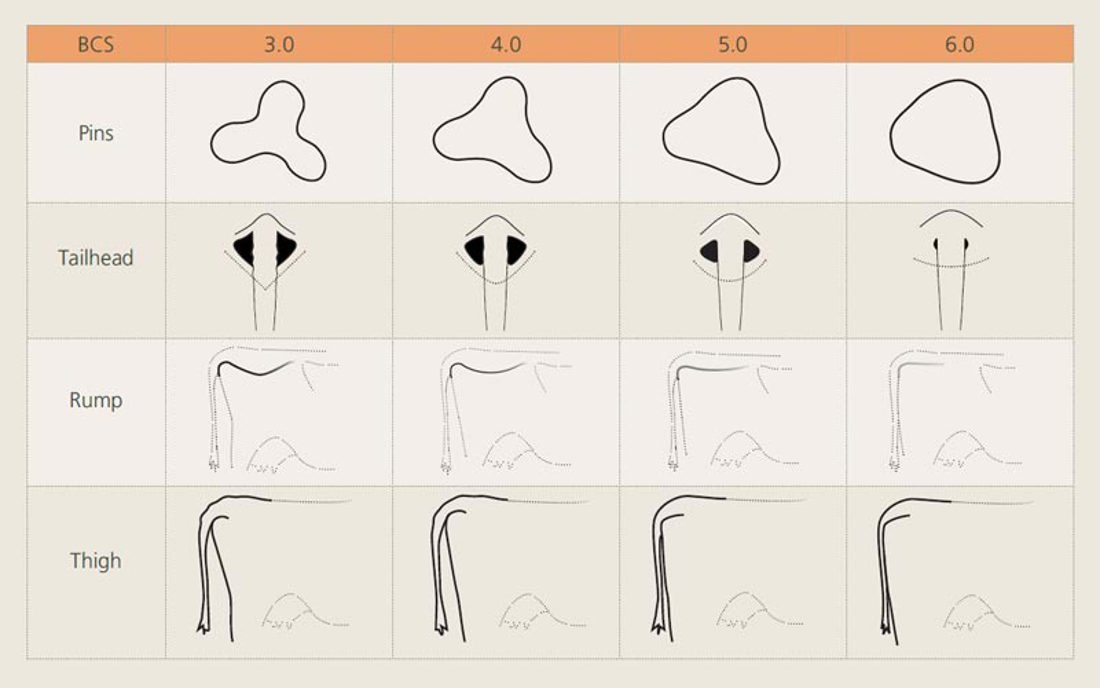How to Body Condition Score (BCS)
2 min read
Body Condition Scoring (BCS) is a method to monitor the health and productivity of dairy cows by assessing their body fat. This page provides a guide on how to carry out BCS, highlighting specific body parts to check, including the backbone, ribs, hip bones, and more. View the videos further down the page to better understand the scoring process.
Although there are significant differences in size and angularity between the common New Zealand dairy breeds, the same guidelines for BCS assessment can be applied to all breeds.
This series of 7 short videos contain an overview and examples of how and why we BCS. Watch the first three videos to understand why we BCS, and the technique used. The following videos include examples of each condition score and how we score each body point.
Body condition scoring is a simple process. However, it is important to calibrate the eye by first condition scoring cows 'hands-on' at the dairy shed before you are ready to BCS in the paddock:
Line up 15 cows with a range of BCS




Farmers can score cows, but while body condition scoring is a simple process, it requires training, practice and regular calibration to ensure accuracy and consistency.
Most people need formal training to visually score cows with greater accuracy than 1.0 BCS units. With training, assessors can confidently score cows to 0.5 BCS units visually.
The best way to ensure independent, accurate and consistent body condition scoring using the DairyNZ method is to use a Certified BCS Assessor.
Attend a DairyNZ BCS training workshop and use the DairyNZ Body Condition Scoring Made Easy field guide.
How well can you BCS? Are you as good as you think? Complete the interactive courses below to test yourself.
A great introduction for those new to BCS and the DairyNZ BCS standard. Takes 10-15 minutes to complete.
For those who have experience in BCS and are wanting to test or refresh themselves against the DairyNZ BCS standard, use the links below. Each breed takes approximately 15 minutes to complete.
Now’s the perfect time to check in, plan, and set up for a strong season. We’ve pulled together smart tips and tools to help you stay ahead all winter long.
Whether you prefer to read, listen, or download handy guides, we’ve got you covered with trusted tools to support your journey every step of the way.
Put our proven strategies and seasonal tools to work. Boost production, support animal health and watch your profits hum.
Tools that are backed by science, shaped by farmers and made for this season.
That’s Summer Smarts.